List of Authors
>>About this blog
Recent blog post
|
[often slap]
September 30, 2018 12:00
Hello! Today, I would like to report on the last tuna auction tour of Tsukiji Market!
As you all know, the Tokyo Metropolitan Central Wholesale Market Tsukiji Market in Tsukiji, Chuo-ku will close at the end of October 6 this year, and its function will move to Toyosu Market in Koto-ku.
Meanwhile, the tour of the tuna auction, which has become popular among foreign tourists in recent years, ended on September 15th.
I wanted to go to the tour once before the closing, so I heard the last information on September 15 and rushed in.
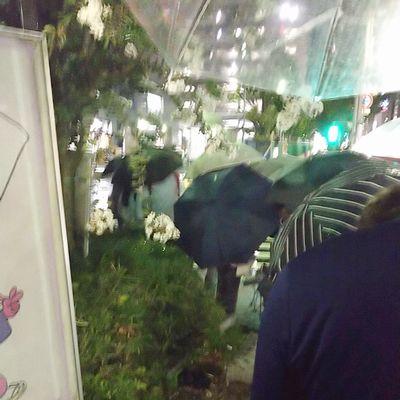
By the way, the tuna auction tour is divided into two groups around 6:00 am, and the tour is accepted at 5:00 am.
It is not a pre-reservation system, so if you want to visit, you need to wait in front of 5:00 in the morning, it is quite hard.
However, I started to line up on this day at 23:00 pm on the 14th the day before! ・... I really wanted to go to the tour on the morning of the 14th, so I visited around 4 o'clock in the morning, but on that day, "The people who lined up at 2 o'clock in the morning reached the capacity, so the reception was closed I failed to challenge ... "The last day will be closed when the date changes ...!"
When I entered the line, about 20 people were already lined up. While it rains, hold your umbrella and wait still.
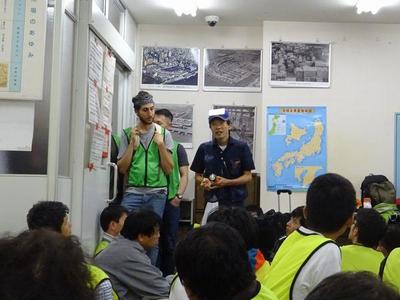
After a while after the date changed, the number of people lined up increased, so the reception started and I had them pass through the room of the facility.
After that, I wait at the physical education seat and light up the night. It was good because I was able to survive the rain, but it was a very good training.
Perhaps it was 4:00 am, a wholesaler came to explain the tuna auction in Tsukiji Market. There are many foreigners, so the explanation is English. I answered English questions exactly in English, and they responded wonderfully!
After that, I finally leave the room before six in the morning. When I went out, it was quite bright.
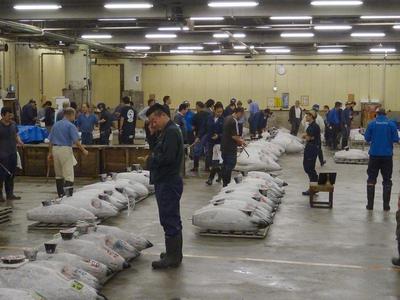
After entering the building of the racetrack, it was finally a long-awaited tour.
Inside, I was able to see the frozen tuna lined up in a row in the same space up close.
And over time, buyers gathered one after another.
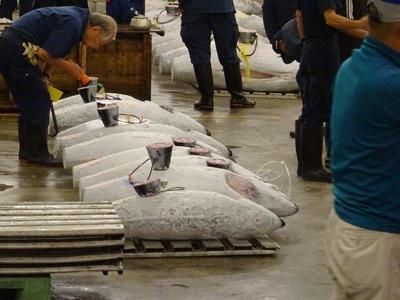
You can see something in a conical shape on each tuna, but this is a cut off the tail to check the quality of the tuna, and buyers use this part with a Kama to check the quality. Shake the body and pick it up or illuminate it with a flashlight to check the quality.
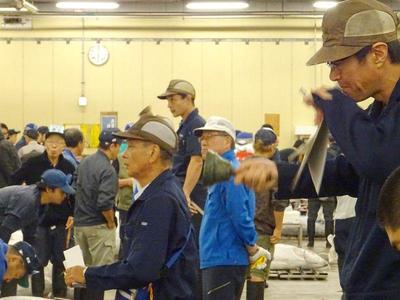
After 6 o'clock, when the seller ringed the bell, the auction began, and voices shouting at prices all over the venue were heard. The auction progressed steadily while showing the price with your fingers, so I couldn't keep up as a general visitor, but I was able to experience a unique atmosphere.
According to what I heard, a tuna auction tour will be held at Toyosu Market, where the relocation site is located. However, it seems that there will be a passage and space dedicated to visitors, so it is undeniable that the tour can be done safely and with little trouble, but it will be "from outside". It was a very valuable experience to be able to visit the auction site from the inside at Tsukiji!
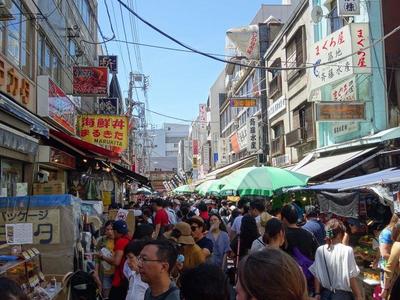
By the way, Tsukiji Market will close soon, but the city of Tsukiji itself should be enjoyed in the future! I think so.
The Tsukiji Outer Market, which was formed around the Tsukiji Market, remains at its current location, and is powering up by adding Ningro's Tsukiji Fish Bank. I think it will not only continue to be a place for buyers to purchase, but also serve as a base for disseminating Japanese food culture to those who come to sightseeing. (The photo shows the Tsukiji Outer Market.)
In addition, the city of Tsukiji has many other attractions besides the market. Tsukiji Honganji Temple, which has a unique main hall that combines ancient Indian style and Japanese temple architecture style, prewar wooden architecture that remains in various places, and many historical sites related to Christianity in Akashicho.
[Dimini ☆ Cricket]
September 30, 2018 09:00
Last month, I used it at a meeting of the company where I work.
The history of Shintomi-cho since the Meiji era, as well as the deliciousness of the dishes and the well-being, is wonderful, so I will cover the day again and introduce it on this blog.
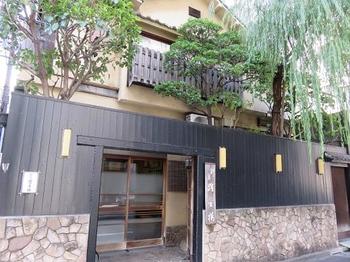
Founded in 1873.
It seems that this year marks the 145th anniversary of its founding.
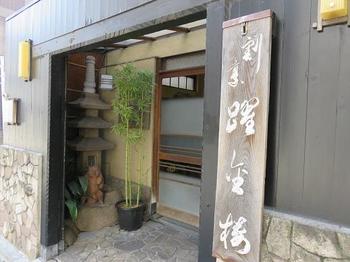
The name of the shop is written as "Daikinro" and read as "Tekkinro".
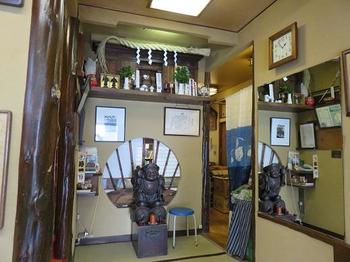
This is a passage from the "Yueyanglou" of Hanchuen, a poet from North Soong Province, China.
"Long Smoke Ichiku Kozuki Chiri Floating Floating Fleet Shadow"
It seems that it was named after it
It seems that it was entrusted with the thought that it was a shop that served lively dishes, like the waves shining by light to the appearance of fish scales jumping golden. 
Certainly, that thought was inherited, and at the meeting last month, the “simmered Kichiji” that was served was really delicious.
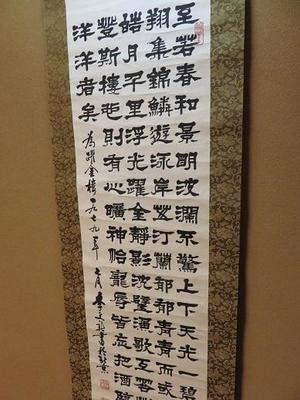
The hanging scroll of "Hyogo no Ma", tokonoma's "Yueyanglou"  and its parts of "Daikin" and its parts of "Daikin"
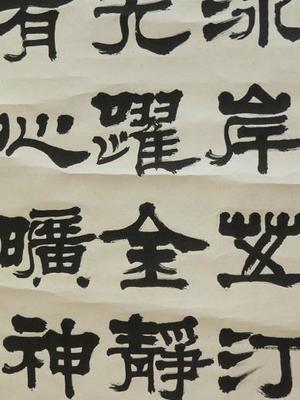
By the way, this "Yueyanglou" is also famous for the so-called "Koraku" word in the latter part, "I am worried about the worries of the world first and enjoy the peace of the world later" (knowledge of the politician).
Yueyanglou is located on the northeastern shore of Lake Dongfeng in Hunan Province, China, and is a large scenic area with the Yangtze River to the north. 
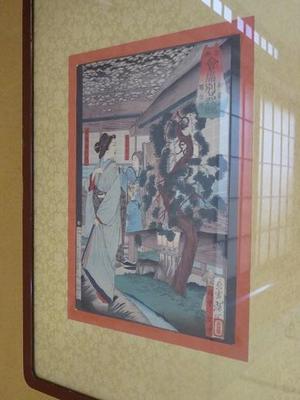
(1878 edition of "Akaiseki Betsushi Competition", Yoshitsuki Tsukioka, in the courtyard of Jinro)
The name of the shop is Tesshu Yamaoka.
Tesshu Yamaoka was one of the "Mifunes of late Tokugawa shogunate" and was a great man from late Tokugawa shogunate to Meiji, famous as a calligrapher, who led Edo Castle to bloodless opening.
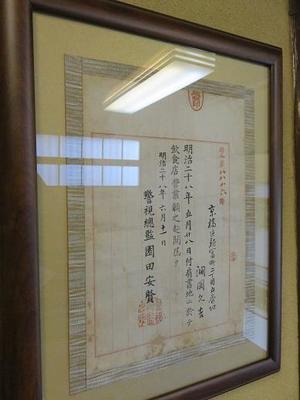
(Business license at the time of 1895)
The shop is decorated with venerable items that tell its history, and at last month's meeting, we were able to hear those explanations from the landlady.
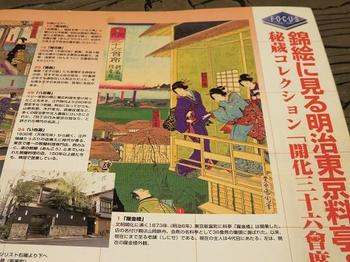
It seems that the restaurant was reputed so that it was selected as  one of the ukiyo-e "Flowing 36 Kaiseki", a gourmet guide at the time, written in the late Meiji era. one of the ukiyo-e "Flowing 36 Kaiseki", a gourmet guide at the time, written in the late Meiji era.
The ukiyo-e is also displayed in the corridor of the shop, and is also used as a coaster of the shop, and was able to commemorate it (pictured below ). ).
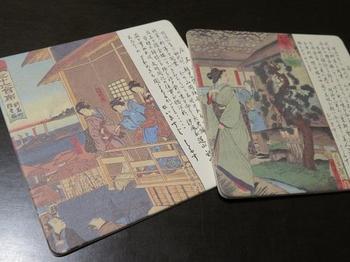
During the war, it was impossible to continue business in itself, and it was said that he had been moved to Ogikubo, but after the war, he returned to the place of a quaint Japanese house surrounded by the current black fence. It seems to be in 1949.
After that, the extension and renovation were repeated, and it was said that it was reached now.
This building has been selected as one of the Top 100 Modern Building Surveys in Chuo-ku, and is introduced as "a black fence restaurant building that conveys the remnants of Shintomi's Hanayanagi world."
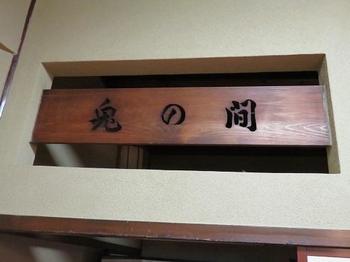
The parlor is used according to the number of customers, such as "Hall", "Rabbit", "Pinema", and "Hyoma". Each room has furnishings that make you feel the history. "Pinema", and "Hyoma". Each room has furnishings that make you feel the history. 
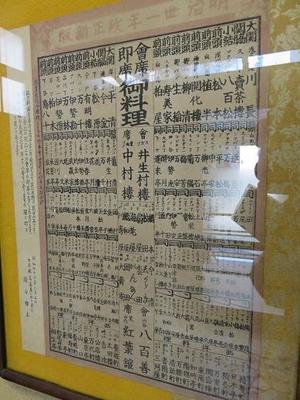
"Daikinro" (although the character of Yaku is different) which was also listed with the kaiseki dish number that appeared in 1898. kaiseki dish number that appeared in 1898.
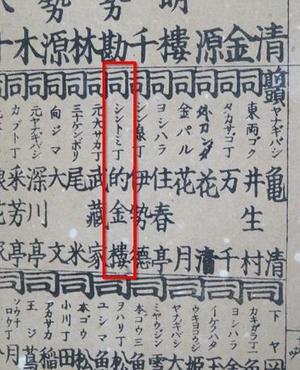
On the first floor, there is a counter-type "Stando Kappo cuisine" separate from Kappo cuisine. separate from Kappo cuisine.
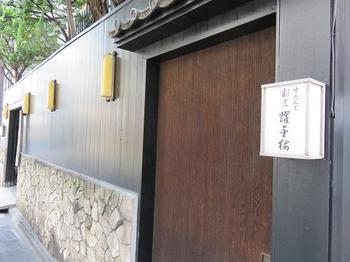
This is the Kappo cuisine restaurant of "History of Shintomicho itself" mentioned at the beginning.
You can feel the history just by passing in front of the shop.
Please drop in once.
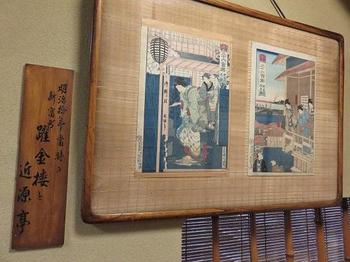
Regarding this interview, the landlady Tokiko Kanoka (Tanioka) gave a polite and polite explanation. Thank you very much  for your understanding. for your understanding.
Thank you very much
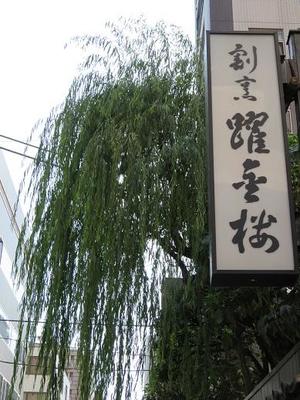
Click here for the details. ⇒
http://www.tekkinro.com/
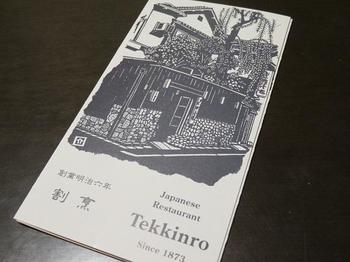
This building is introduced in the 100 Chuo-ku Modern Building Surveys. ⇒
http://www.city.chuo.lg.jp/bunka/timedomeakashi/
kindai_kentikubutu_tyousa/kindai45.html
     
[Hanes]
September 29, 2018 14:00
Hello. This is a new correspondent, Hanes. 
This time, "[3rd excursion series] Follow the roots of Ginza....Continuing on from
I would like to focus on the relationship between Shizuoka and Chuo-ku (especially Ginza)!
On a rainy day in September, this willow happened to be seen at Sunpu Castle Park.
If you look closely at the information board...There is Yanagi Nisei in Ginza!
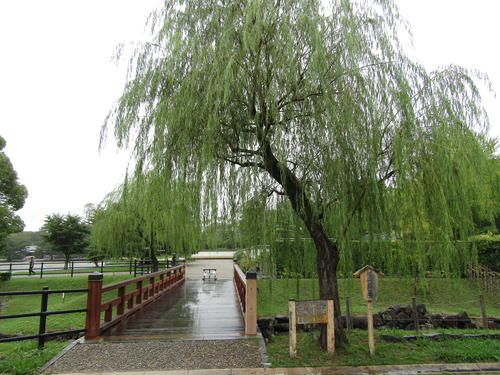
I was worried, so when I read the details, this was written in addition to the story of Ginza that I introduced last time.
"In 1884, the street trees in Ginza were unified to willows, but despite the damage of the Great Kanto Earthquake of 1923 and the Great Tokyo Air Raid in 1945, the citizens' enthusiasm for preserving them grew, and the splendid trees revived. However, from around 1967, during the period of high growth, willows in Ginza disappeared. Local volunteers who were hurt by this have poured their heart and soul into the preservation movement, cultivated seedlings with cuttings, and donated not only to Ginza but also to the whole country. Motoichi also planted Ginza's Yanagi II in one corner of Sunpu Castle toes due to the relationship of Ginza, and passed on to future generations. "
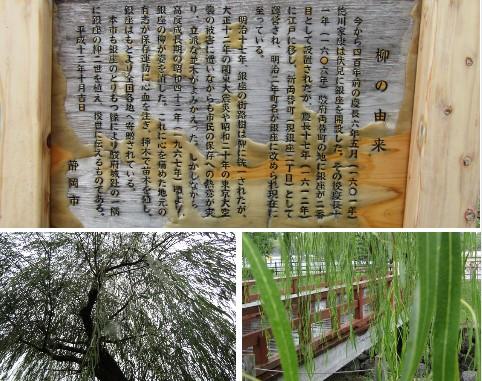
In other words, Yanagi Nisei in Ginza is planted in various places throughout the country.
In Ginza, which is important, two Ginza Yanagi Nisei are planted near Ginza Nine.
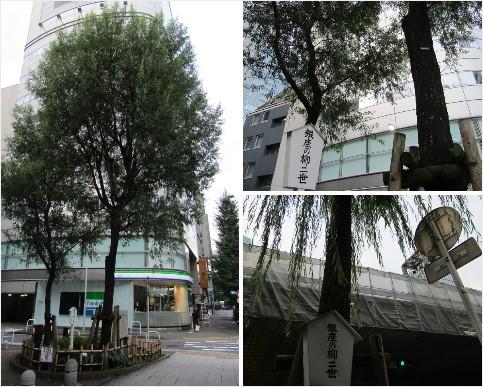
And next to one willow is the "Ginza willow Monument".
The lyrics and music of "Ginza Yanagi no Uta" (lyrics: 80 Saijo, composed: Shinpei Nakayama) are engraved.
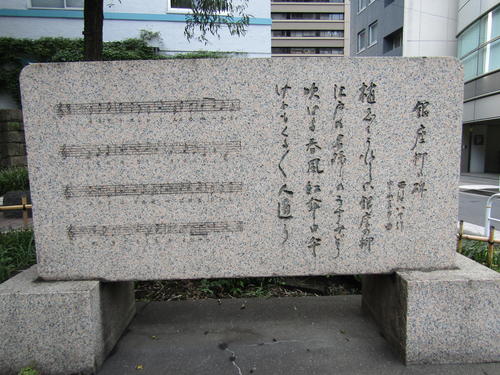
♪The willows in Ginza that are nice to plant.
The remnants of Edo
Let's blow a spring breeze parasol
Today's busy street
Willow from Marronnier Ginza in Mari
West and East Love Inn
Who will wait for that child's shoulder
Itoyagi
The willow that doesn't give love is green
Spring pattern of the capital to be dyed
Ginza Ureshi and willows invite you
The streets of the Showa era
This song may also be given at the Chuo-ku Tourism Test, which has been lifted the other day!
It's a great deal, so please take this opportunity to remember the number one.
When Ginza's Yanagi Nisei finds a unique edge, I will introduce it again on my blog.
[Hanes]
September 27, 2018 18:00
Hello. This is a new correspondent, Hanes. 
This time, in the excursion series for the first time in May, we will focus on Shizuoka, which is closely related to Ginza.
...However, I don't think the relationship between Ginza and Shizuoka immediately comes to mind.
But what about trying to replace Shizuoka with Sunpu?
There may be some people who suddenly get a pin.
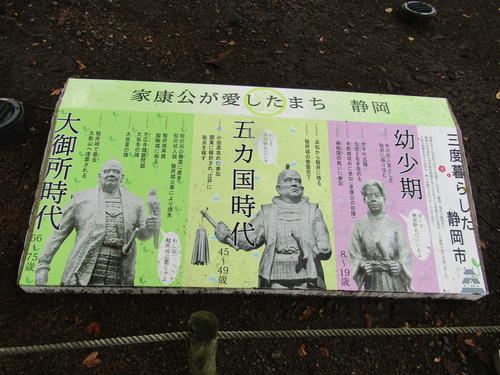
(Shooted at the north exit of Shizuoka Station in September 2018)
As shown in the panel in the photo above, Ieyasu Tokugawa is the key to this relationship.
And he spends about a third of his life in Sunpu.
・Age 8 to 19: Imagawa's childhood as a hostage
(This scene was also seen in the previous Taiga drama series "Onna castle owner Naotora".)
・45-49 years old: Until the relocation of the Kanto region
・66-75 years old: Gosho era returned from Edo after the opening of the prefecture
With these things in mind, when you actually walk around the city of Shizuoka City, you can see them.
A monument with the Aoi crest jumps into my eyes
This is a monument that shows the "Place of Sunpu Ginza".
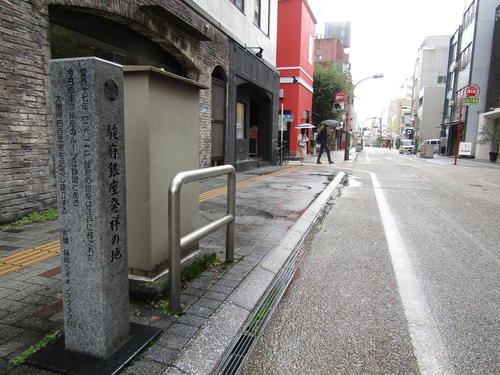
On the side of the monument is that Ginza was moved from Sunpu to Edo in 1612 (by Ieyasu).
It is engraved that the roots of today's Tokyo Ginza are in Shizuoka.
This is the official text of the Chuo-ku Tourism Certification "Chuo-ku Monoshiri Encyclopedia that can be walked on foot"
It is also published. (The latest version is scheduled to be released on October 15, 2018 (Monday))
When you come to the place that actually becomes the roots of Ginza and enjoy the atmosphere of the castle town of Sunpu Castle with your five senses.
There was something more emotional than I thought.
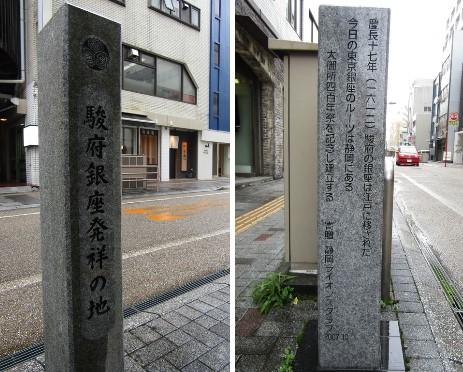
On the other hand, today's Ginza has a strong presence as well as brand stores.
There is a monument called "Ginza Birthplace"  (Place: in front of Tiffany & Co.) (Place: in front of Tiffany & Co.)
This monument is engraved as follows.
"In 1612 (2272 AD, 1612 AD), Tokugawa shogunate established the Ginza Office here.
At that time, the name of the town was called Shin-Ryogaecho, but it was commonly called Ginza-cho, and it was announced in 1869 that Ginza was finally the name of the town."
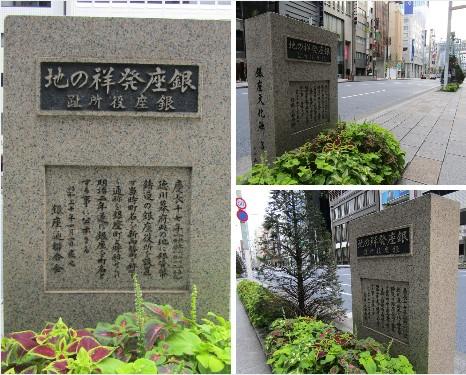
When I moved from Sunpu, it was also called "Shin Ryogaecho" instead of Ginza.
This is the point I want to keep as a lover of Chuo-ku!
Through this excursion, the origin of Ginza has a remnants of the Edo period.
I was able to reconfirm that Ieyasu was in the key Shizuoka.
In the fourth excursion series, we will focus on Shizuoka and introduce our relationship with Chuo-ku.
[Reference Materials]
Learn Ieyasu, commemorating the 400th anniversary of the Imperial Palace: https://www.visit-shizuoka.com/t/oogosho400/index.htm
TOKYO GINZA OFFICIAL: http://www.ginza.jp/
[Past Excursion Series]
[First Excursion Series] Ako Gishi learning from wooden statues and Japanese sweets
[Second Excursion Series] It was in Kyobashi! Japan's first street payphone
[Shitamachi Tom]
September 26, 2018 12:00
The day of the relocation of Tsukiji Market (Tokyo Central Wholesale Market) to Toyosu is approaching.
Because I live nearby, I sometimes take a look at the morning market at this time. Is it my subjectivity to feel a little sadness in the usual hustle and bustle?
Several related facilities have already been closed, and [Mizu Shrine], which has moved from the fish shore of Nihonbashi, has already completed its transition. It's lonely to look at things that disappear little by little, but I think this is also a scene of the flow of history and I want to burn it firmly to my eyes.
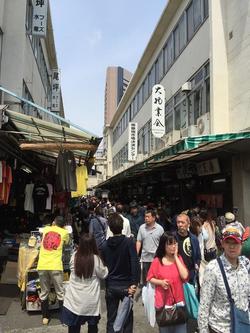
The restaurant in [Uogashi Yokocho], which has filled the appetite of many market participants, will soon close. It seems that there are many shops that are full of this month. Many people rush every day in search of the last taste, and it is going to be difficult.
I would like to keep in mind that there was a market in Tsukiji and entrust myself to my thoughts for the future.
[Hanes]
September 26, 2018 09:00
Hello. This is a new correspondent, Hanes. 
The start date of applying for volunteers at the Tokyo Olympic and Paralympic Games is
September 21 (Fri), which is less than a week....
We have participated in the "Lecture on the 1st Olympic and Paralympic Games 2018-Let's reduce the distance behind Japan and Brazil with an understanding" held at Chuo-ku Office! .
Chuo-ku signed a memorandum of understanding with the Brazilian Olympic Committee in June last year.
A Family and Friends Lounge (a place where players and others can interact with family and friends) will be set up at Toyomi Elementary School.
Chuo-ku is the only ward where an athlete village can be formed, and among them, especially those in Brazil.
Isn't it going to deepen exchanges more and more ? ?

In order to deepen our understanding of Brazil from now on, we will continue to do so.
This time, Mr. Chisuko Iizumi, a public relations department of Meiji Co., Ltd., who also has a license for a dietitian, and has a license.
Moema Ramos of the Brazilian Olympic Committee came.
In the first half, Iiizumi introduced Brazil!
Find commonalities and differences between Japan and Brazil from topics such as food and drink, education system, sports and industry.
After that, I learned about the cacao production area in Tomeas, Brazil, which is also used in chocolate in the Meiji era.
Here, we conduct agriculture that creates forests called agroforestry agriculture (agriculture + forestry).
They say they are pursuing the restoration and sustainability of Amazon. 
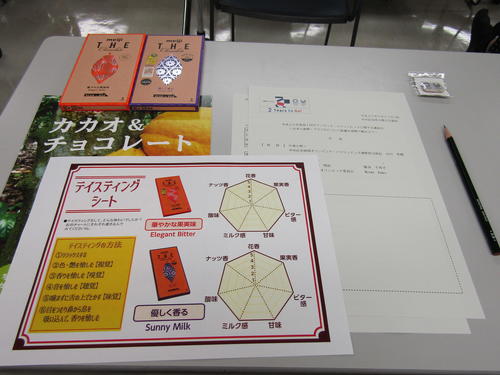
In fact, you can smell the scent of cacao beans and cacaonib that came into the Meiji factory from Brazil.
You can get 2 kinds of meiji THE Chocolate as souvenirs.
I was able to feel chocolate with all five senses and eventually Brazil.
Brazil located on the other side of the earth...
Although it is far away, I also found that there is a surprisingly familiar connection.
In the second half, we will discuss the efforts of the Brazilian Olympic Committee at the Rio Olympics.
Mr. Ramos introduced me with a video.
We have set up seven base camps in Rio that are easy for players to access the venue and have solid security.
Athletes' families and friends (not allowed to enter the athlete village) can watch the game and set up a family lounge where they can relax.
It seems that they had given sufficient consideration to the players and their stakeholders.
Listening to these stories, we learned about our efforts in Rio and prepared for 2020.
As a correspondent working in Chuo-ku, I was also very inspired!
As you can see from Tsukiji Reservoir and modern Ginza, Chuo-ku is a very international ward.
How will Chuo-ku evolve toward 2020?...I'm really looking forward to it.
※This article has been approved by the person in charge of this lecture.
|
Links
|

![]()

![]()
































